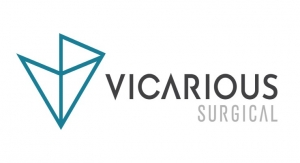Michael Barbella, Managing Editor04.08.14
It wasn’t the sight of sick children that bothered Don Lombardi so much during his tenure at Boston Children’s Hospital. As chief intellectual property officer for the top-rated institution, Lombardi had grown accustomed to the daily montage of pint-sized patients with adult-sized health problems: the premature newborns with underdeveloped lungs, the bedridden toddlers with only half a working heart, the playful preschoolers with deformed or missing limbs, and the fearful prepubescents with cancerous tumors—easily discernible by the random patches of thinning hair on their heads.
No, it wasn’t the sickness that bothered Lombardi.
It was the treatment.
“I was astounded to see the number of people crushing pills, mixing it with liquids and giving it to the kids, and wishing their parents good luck when they sent them home,” said Lombardi, who spent 15 years in the hospital’s intellectual property office. “There’s an enormous range of everyday devices and drug formulations that simply don’t exist for treating kids. It’s so ingrained in the pediatric clinician that they have to make up their own tools much of the time, they don’t even recognize that it’s not right. They just think that’s how you take care of kids.”
It may not be right but clinicians really have no other choice, as there are precious few remedial options designed specifically for children. The science-fiction-like advancements that have occurred in medical technology over the last quarter century have failed to filter down to the youngest patients, forcing practitioners to rely primarily on makeshift tools, oversized devices, scaled-down drug doses and plain old Lady Luck to treat juvenile conditions. For the most part, pediatric medicine is still stuck in the Stone Age, where revolutionary innovations like bionic body parts, bioabsorbable heart stents, robotic surgery and regenerative medicine are purely fantasy.
Joining the modern world has been and perhaps always will be a challenge for this particular patient group. In a way, children are victims of their own circumstance: They are well outnumbered by adults and generally blessed with good health, effectually shielded from harm by their newer, more potent cells and biological processes. Cancer and heart disease, for example, largely hunt mature game—the American Cancer Society expects the disease to kill 1,960 kids (aged 0-19) this year, or 0.33 percent of the 585,720 U.S. grown-ups estimated to fall prey to the malady.
Similarly, only one in every 100,000 children under 18 is diagnosed with cardiomyopathy (heart muscle disease), a far cry from the half-million American elders living with the condition. An estimated 1,600 U.S. children between ages 1 and 17 received a defibrillator or pacemaker in 2010 (an adult-sized model, no doubt), according to data from the U.S. Department of Health and Human Services. Conversely, 56,033 patients ages 45 through 64 and 155,446 people aged 65 through 84 were fitted with the device. Juvenile heart attacks are so rare that national data is difficult to find, though a report from Ohio doctors documents nine cases over 11 years (adults should be so lucky: Roughly 720,000 people over the age of 18 suffer a myocardial infarction annually, Centers for Disease Control and Prevention statistics indicate).
Those disparities make it difficult, if not impossible, for children to attract much attention from medtech investors or medical device companies.
“The pediatric device market is very small. Generally speaking, 5 to 6 percent of [U.S.] healthcare dollars are spent on children, even though the [overall] population is comprised of 25 percent kids. And the reason for that is most kids are healthy,” said Lombardi, who left Boston Children’s Hospital in 2006 to found and lead the Institute for Pediatric Innovation (IPI), a non-profit organization based in Cambridge, Mass., that develops juvenile devices and drugs. “But that 5 to 6 percent is divided among the preemie, the toddler, the young child, the pre-teen and even the teenage mother. So a particular device aimed at a specific patient population is only going to get a small fraction of that 6 percent. Fundamentally there’s a perception and in many cases, a reality, of a lack of adequate market size, certainly for the major companies to pay attention to most of the needs of pediatric care.”

The Mongoose catheter from PediaVascular was designed specifically for children. It is the only FDA-approved angiography catheter for kids. Image courtesy of PediaVascular.
Tim Moran encountered such indifference five years ago after forming a non-profit company called PediaWorks Inc. at the Cleveland Clinic’s business development center. Inspired by his eldest child’s premature birth (10 weeks early), and the frustrating lack of suitable devices for preemies (he still remembers his daughter screaming in pain as doctors strapped the only available, excessively large airway mask to her head), Moran became determined to improve patient care among juveniles. He began by developing a heart catheter for babies.
An experienced entrepreneur, Moran created a business and marketing plan for the device and pitched the idea to various medtech manufacturers. “We essentially handed them a marketing plan and said, ‘We’re happy to take a step back here. Take it and run,’ “ Moran recounted to Medical Product Outsourcing. “No one was interested. They said, ‘We’re aware of this, but it’s not a market that we can justify to our shareholders.’”
Moran was not discouraged, though. Acting on a tip from a cardiologist, the father of four cold-called a Japanese medical equipment firm selling small adult cardiac catheters and convinced its executives to invest $500,000 in the venture. Moran used the money from Medikit Co. Ltd. to create the for-profit spin-off PediaVascular and develop the first U.S. Food and Drug Administration (FDA)-approved pediatric catheters and sheaths.
Moran’s next labor of love is a bio-absorbable stent for babies and children with heart blockages. He plans to repeat the PediaVascular business model with his new endeavor, establishing another for-profit company and using its proceeds to finance the founding group’s mission.
Limited public funding and negligible investor interest in the pediatric device space have forced 501 (c)(3) groups like Moran’s to pursue non-traditional financing based on purpose rather than profit. Fiscal support has come mostly from philanthropic, business incubation and other sources unbeholden to stakeholders or returns on their investment. However, corporate contributions are not unheard of—in its first year of existence, IPI received a substantial boost from Respironics Inc. (now Philips Respironics) subsidiary Children’s Medical Ventures to conduct a needs analysis in neonatal intensive care units. Philips Healthcare also awarded the institute a $340,000 grant to design an adhesive medical tape for premature infants.
“The unfortunate piece in the pediatric sense is a lot of needed products don’t have that return on investment or financial carrot out there that would entice a traditional medical device company to jump in and devote the resources, time and money it takes to develop those products,” noted Brad Slaker, founder of DesignWise Medical, a Minneapolis, Minn.-based non-profit development organization of niche medical devices for newborns and children. “Everything can be boiled down to a financial argument. In talking with companies, organizations and people who work locally in the medical device industry, from a personal and a human standpoint, they would all love to work on pediatric products. But the reality of their business structures don’t allow them to do that because it’s not going to be something that will help their bottom line, and they have to answer to their shareholders. It really is a financial argument more than anything else. Other people may bring up concerns about liability or the clinical and FDA pathways being too long and arduous but if you distill those arguments down to their basic essence, it becomes a financial thing.”
Maybe so, but those other arguments aren’t very appealing to major medtech manufacturers, either. The potential risks associated with testing experimental products on patients too young to comprehend the hazards and outcome is a significant deterrent, especially for companies with little or no experience in pediatric medicine.
And the FDA is more of a hindrance than a help. Most medical device firms already dread their passage through the agency’s complex, confusing and time-consuming product approval process; few (if any) are willing to complicate that journey by hopping on a road less traveled. Some firms are just as discouraged by the lack of published data on pediatric products.
To its credit, however, the FDA is addressing the latter concern with a new regulation and draft guidance that clarifies the kind of information companies must submit with pediatric device applications. The agency also is doing its part to generate more interest in the sector with the creation of a Pediatric Consortia Grant Program and removing the profit prohibition for humanitarian device
exemption devices used to treat children.
The FDA’s 7-year-old grant program has issued $11 million in its first four years and has given a boost to more than 243 pediatric medical device projects (the majority of which have not been brought to market). Thus far, the initiative has resulted in the approval of three products:
“The pediatric consortia grants initiative is a fabulous step and it’s definitely important to keep funding,” Slaker said. “But it’s even more important to keep the visibility out there among our industry and related industries that we can’t ignore the pediatric space.”
Such visibility may be starting to pay off. Some experts believe companies now are more mindful of children’s medical needs than they have been in the past.
“It’s still pretty clear that there’s a need for technology and advancement in pediatrics, specifically pediatric orthopedics,” noted Kurt Vedder, founder and CEO of Fixes 4 Kids Inc., a Salt Lake City, Utah-based developer and manufacturer of pediatric orthopedic products. “I think the concept is now becoming more well-appreciated. Four years ago when we started that was also very true but it was not quite as appreciated as it is today. Surgeons are operating earlier in a child’s life and because of that there’s a need for technology, tools and devices. In the past, the belief was a kid will heal on his own. That is no longer a true statement. Kids are having more ACL (anterior cruciate ligament) surgeries today because they are playing club sports and sports year-round, and their bodies are not mature enough to handle the stress associated with it. Pediatrics is definitely a growth area. If you ask the Strykers of the world if it is of interest to them the answer is going to be yes. Most [orthopedic companies] are currently focused on the extremities. Pediatrics is on the list but it hasn’t yet bubbled up to the top. At some point, it will be a target area.”
The boiling point may still be quite a ways off, though. Children are not the easiest patients for which to design devices and clinical trials—their bodies are a microcosm of biodiversity, each containing its own growth rate, metabolism, heart rate, activity level, chemical composition, protein levels and blood pressure. The medley of physiological data varies according to age, making general treatments extremely difficult, if not futile. IPI, for example, partnered with bioengineers at Brigham and Women’s Hospital and the Massachusetts Institute of Technology to develop a medical tape that would not damage the fragile skin of newborn and premature infants. The quick-release tape features the strong adhesion properties of commercial medical tape (which is harmless to toddlers and older children) but uses a specially engineered layer design that allows for safe removal.
Implantable devices can be particularly challenging. Unlike adults, children’s bodies are constantly growing and changing, morphing from a fragile foundation of 300 bones, soft muscles and thin skin to a dense skeletal structure of hard muscle and efficient electrical wiring, all linked by a 60,000-mile-long network of blood vessels. During development, the diameter of the heart’s aortic and pulmonary valves more than triple in size, and left ventricular diastolic volume swells 15-fold, going from 10 mL to 150 mL. Hence, kids with congenital heart defects or other cardiac conditions need a device that can accommodate their rapid growth.
The same logic extends to orthopedic implants. The vast majority of joint replacements are performed on adults well past the development stage—decades removed from the growth plate activity, bowed femurs and natural bone fusion that defined their childhood. Consequently, pediatric implants must adapt to a child’s rapid development without disturbing the growth plates essential to their maturation.
“Children’s bones are roughly 30 percent more bowed than adult bones but as the child grows, the bones straighten out,” explained Mark Throdahl, president and CEO of Orthopediatrics Corp., a developer of juvenile orthopedic products based in Warsaw, Ind. “The morphology of the pediatric bone is completely different in terms of the shapes and configurations. The anatomy of a child’s bone is different, so the plates and rigid nails we make are very unusual compared to their adult counterparts because they are very bowed and have unusual twists and turns. Kids’ bones also have growth plates on the top and bottom. If those growth plates are violated by a screw, for example, it can create a growth arrest, which can cause a deformity over time. Adult plates and nails have typically been sawed down to fit and then bent in the operating room. But when you bend a plate to conform to the greater bow structure of the child’s bones, that screw may end up invading the growth plate. And there have been a number of cases where that’s happened. So an understanding of how to design products so they don’t invade the growth plate is key to developing a successful pediatric implant.”
Great designs, however, don’t necessarily guarantee commercialization. Companies easily can run into trouble recruiting pediatric study participants due to parental consent and the overall difficulty in explaining untested procedures to a child. In addition, the various subpopulations can limit the number of young recruits and add to the overall trial cost.
Indeed, the pediatric device sector is fraught with challenges. But as Throdahl noted, great challenges beget great rewards.
“There is an emotional component to these surgeries that is just non-existent in the adult space,” he said. “Our products end up being used half the time in a child with cerebral palsy. These products can enable a child confined to a wheelchair to live without pain and they can enable other children to walk normally for the first time. Is there really anything more compelling than enabling a child to walk?”
No, it wasn’t the sickness that bothered Lombardi.
It was the treatment.
“I was astounded to see the number of people crushing pills, mixing it with liquids and giving it to the kids, and wishing their parents good luck when they sent them home,” said Lombardi, who spent 15 years in the hospital’s intellectual property office. “There’s an enormous range of everyday devices and drug formulations that simply don’t exist for treating kids. It’s so ingrained in the pediatric clinician that they have to make up their own tools much of the time, they don’t even recognize that it’s not right. They just think that’s how you take care of kids.”
It may not be right but clinicians really have no other choice, as there are precious few remedial options designed specifically for children. The science-fiction-like advancements that have occurred in medical technology over the last quarter century have failed to filter down to the youngest patients, forcing practitioners to rely primarily on makeshift tools, oversized devices, scaled-down drug doses and plain old Lady Luck to treat juvenile conditions. For the most part, pediatric medicine is still stuck in the Stone Age, where revolutionary innovations like bionic body parts, bioabsorbable heart stents, robotic surgery and regenerative medicine are purely fantasy.
Joining the modern world has been and perhaps always will be a challenge for this particular patient group. In a way, children are victims of their own circumstance: They are well outnumbered by adults and generally blessed with good health, effectually shielded from harm by their newer, more potent cells and biological processes. Cancer and heart disease, for example, largely hunt mature game—the American Cancer Society expects the disease to kill 1,960 kids (aged 0-19) this year, or 0.33 percent of the 585,720 U.S. grown-ups estimated to fall prey to the malady.
Similarly, only one in every 100,000 children under 18 is diagnosed with cardiomyopathy (heart muscle disease), a far cry from the half-million American elders living with the condition. An estimated 1,600 U.S. children between ages 1 and 17 received a defibrillator or pacemaker in 2010 (an adult-sized model, no doubt), according to data from the U.S. Department of Health and Human Services. Conversely, 56,033 patients ages 45 through 64 and 155,446 people aged 65 through 84 were fitted with the device. Juvenile heart attacks are so rare that national data is difficult to find, though a report from Ohio doctors documents nine cases over 11 years (adults should be so lucky: Roughly 720,000 people over the age of 18 suffer a myocardial infarction annually, Centers for Disease Control and Prevention statistics indicate).
Those disparities make it difficult, if not impossible, for children to attract much attention from medtech investors or medical device companies.
“The pediatric device market is very small. Generally speaking, 5 to 6 percent of [U.S.] healthcare dollars are spent on children, even though the [overall] population is comprised of 25 percent kids. And the reason for that is most kids are healthy,” said Lombardi, who left Boston Children’s Hospital in 2006 to found and lead the Institute for Pediatric Innovation (IPI), a non-profit organization based in Cambridge, Mass., that develops juvenile devices and drugs. “But that 5 to 6 percent is divided among the preemie, the toddler, the young child, the pre-teen and even the teenage mother. So a particular device aimed at a specific patient population is only going to get a small fraction of that 6 percent. Fundamentally there’s a perception and in many cases, a reality, of a lack of adequate market size, certainly for the major companies to pay attention to most of the needs of pediatric care.”
The Mongoose catheter from PediaVascular was designed specifically for children. It is the only FDA-approved angiography catheter for kids. Image courtesy of PediaVascular.
An experienced entrepreneur, Moran created a business and marketing plan for the device and pitched the idea to various medtech manufacturers. “We essentially handed them a marketing plan and said, ‘We’re happy to take a step back here. Take it and run,’ “ Moran recounted to Medical Product Outsourcing. “No one was interested. They said, ‘We’re aware of this, but it’s not a market that we can justify to our shareholders.’”
Moran was not discouraged, though. Acting on a tip from a cardiologist, the father of four cold-called a Japanese medical equipment firm selling small adult cardiac catheters and convinced its executives to invest $500,000 in the venture. Moran used the money from Medikit Co. Ltd. to create the for-profit spin-off PediaVascular and develop the first U.S. Food and Drug Administration (FDA)-approved pediatric catheters and sheaths.
Moran’s next labor of love is a bio-absorbable stent for babies and children with heart blockages. He plans to repeat the PediaVascular business model with his new endeavor, establishing another for-profit company and using its proceeds to finance the founding group’s mission.
Limited public funding and negligible investor interest in the pediatric device space have forced 501 (c)(3) groups like Moran’s to pursue non-traditional financing based on purpose rather than profit. Fiscal support has come mostly from philanthropic, business incubation and other sources unbeholden to stakeholders or returns on their investment. However, corporate contributions are not unheard of—in its first year of existence, IPI received a substantial boost from Respironics Inc. (now Philips Respironics) subsidiary Children’s Medical Ventures to conduct a needs analysis in neonatal intensive care units. Philips Healthcare also awarded the institute a $340,000 grant to design an adhesive medical tape for premature infants.
“The unfortunate piece in the pediatric sense is a lot of needed products don’t have that return on investment or financial carrot out there that would entice a traditional medical device company to jump in and devote the resources, time and money it takes to develop those products,” noted Brad Slaker, founder of DesignWise Medical, a Minneapolis, Minn.-based non-profit development organization of niche medical devices for newborns and children. “Everything can be boiled down to a financial argument. In talking with companies, organizations and people who work locally in the medical device industry, from a personal and a human standpoint, they would all love to work on pediatric products. But the reality of their business structures don’t allow them to do that because it’s not going to be something that will help their bottom line, and they have to answer to their shareholders. It really is a financial argument more than anything else. Other people may bring up concerns about liability or the clinical and FDA pathways being too long and arduous but if you distill those arguments down to their basic essence, it becomes a financial thing.”
Maybe so, but those other arguments aren’t very appealing to major medtech manufacturers, either. The potential risks associated with testing experimental products on patients too young to comprehend the hazards and outcome is a significant deterrent, especially for companies with little or no experience in pediatric medicine.
And the FDA is more of a hindrance than a help. Most medical device firms already dread their passage through the agency’s complex, confusing and time-consuming product approval process; few (if any) are willing to complicate that journey by hopping on a road less traveled. Some firms are just as discouraged by the lack of published data on pediatric products.
To its credit, however, the FDA is addressing the latter concern with a new regulation and draft guidance that clarifies the kind of information companies must submit with pediatric device applications. The agency also is doing its part to generate more interest in the sector with the creation of a Pediatric Consortia Grant Program and removing the profit prohibition for humanitarian device
exemption devices used to treat children.
The FDA’s 7-year-old grant program has issued $11 million in its first four years and has given a boost to more than 243 pediatric medical device projects (the majority of which have not been brought to market). Thus far, the initiative has resulted in the approval of three products:
- A brace compression for pectus carinatum, a chest wall deformity in which the breastbone is bowed and pushed outward, resembling a bird’s breast (affecting one in 1,500 kids);
- A Geiger pyloric clamp for pyloric stenosis—the narrowing of the stomach’s lower portion (pylorus) that leads to the small intestine (striking one in every 500-1,000 live births); and
- Abriiz asthma web-based management, a platform that includes a website for parents to monitor their child’s medication compliance. The site features a mobile application that prompts children to take their medication and then relays the information to the parental site.
“The pediatric consortia grants initiative is a fabulous step and it’s definitely important to keep funding,” Slaker said. “But it’s even more important to keep the visibility out there among our industry and related industries that we can’t ignore the pediatric space.”
Such visibility may be starting to pay off. Some experts believe companies now are more mindful of children’s medical needs than they have been in the past.
“It’s still pretty clear that there’s a need for technology and advancement in pediatrics, specifically pediatric orthopedics,” noted Kurt Vedder, founder and CEO of Fixes 4 Kids Inc., a Salt Lake City, Utah-based developer and manufacturer of pediatric orthopedic products. “I think the concept is now becoming more well-appreciated. Four years ago when we started that was also very true but it was not quite as appreciated as it is today. Surgeons are operating earlier in a child’s life and because of that there’s a need for technology, tools and devices. In the past, the belief was a kid will heal on his own. That is no longer a true statement. Kids are having more ACL (anterior cruciate ligament) surgeries today because they are playing club sports and sports year-round, and their bodies are not mature enough to handle the stress associated with it. Pediatrics is definitely a growth area. If you ask the Strykers of the world if it is of interest to them the answer is going to be yes. Most [orthopedic companies] are currently focused on the extremities. Pediatrics is on the list but it hasn’t yet bubbled up to the top. At some point, it will be a target area.”
The boiling point may still be quite a ways off, though. Children are not the easiest patients for which to design devices and clinical trials—their bodies are a microcosm of biodiversity, each containing its own growth rate, metabolism, heart rate, activity level, chemical composition, protein levels and blood pressure. The medley of physiological data varies according to age, making general treatments extremely difficult, if not futile. IPI, for example, partnered with bioengineers at Brigham and Women’s Hospital and the Massachusetts Institute of Technology to develop a medical tape that would not damage the fragile skin of newborn and premature infants. The quick-release tape features the strong adhesion properties of commercial medical tape (which is harmless to toddlers and older children) but uses a specially engineered layer design that allows for safe removal.
Implantable devices can be particularly challenging. Unlike adults, children’s bodies are constantly growing and changing, morphing from a fragile foundation of 300 bones, soft muscles and thin skin to a dense skeletal structure of hard muscle and efficient electrical wiring, all linked by a 60,000-mile-long network of blood vessels. During development, the diameter of the heart’s aortic and pulmonary valves more than triple in size, and left ventricular diastolic volume swells 15-fold, going from 10 mL to 150 mL. Hence, kids with congenital heart defects or other cardiac conditions need a device that can accommodate their rapid growth.
The same logic extends to orthopedic implants. The vast majority of joint replacements are performed on adults well past the development stage—decades removed from the growth plate activity, bowed femurs and natural bone fusion that defined their childhood. Consequently, pediatric implants must adapt to a child’s rapid development without disturbing the growth plates essential to their maturation.
“Children’s bones are roughly 30 percent more bowed than adult bones but as the child grows, the bones straighten out,” explained Mark Throdahl, president and CEO of Orthopediatrics Corp., a developer of juvenile orthopedic products based in Warsaw, Ind. “The morphology of the pediatric bone is completely different in terms of the shapes and configurations. The anatomy of a child’s bone is different, so the plates and rigid nails we make are very unusual compared to their adult counterparts because they are very bowed and have unusual twists and turns. Kids’ bones also have growth plates on the top and bottom. If those growth plates are violated by a screw, for example, it can create a growth arrest, which can cause a deformity over time. Adult plates and nails have typically been sawed down to fit and then bent in the operating room. But when you bend a plate to conform to the greater bow structure of the child’s bones, that screw may end up invading the growth plate. And there have been a number of cases where that’s happened. So an understanding of how to design products so they don’t invade the growth plate is key to developing a successful pediatric implant.”
Great designs, however, don’t necessarily guarantee commercialization. Companies easily can run into trouble recruiting pediatric study participants due to parental consent and the overall difficulty in explaining untested procedures to a child. In addition, the various subpopulations can limit the number of young recruits and add to the overall trial cost.
Indeed, the pediatric device sector is fraught with challenges. But as Throdahl noted, great challenges beget great rewards.
“There is an emotional component to these surgeries that is just non-existent in the adult space,” he said. “Our products end up being used half the time in a child with cerebral palsy. These products can enable a child confined to a wheelchair to live without pain and they can enable other children to walk normally for the first time. Is there really anything more compelling than enabling a child to walk?”
|
Natalie Peterson no longer takes a single breath for granted. For 18 months, the Layton, Utah, mother lived in fear, haunted by her baby boy’s periodic bouts of breathlessness. “He could go from being totally fine to turning blue sometimes—not even kidding—in 30 seconds,” Peterson recently told NPR. “It was so fast. When he got upset, or even sometimes just with a diaper change, he would turn completely blue. It was really scary.” Doctors traced Garrett Peterson’s severe dyspnea to an underdeveloped windpipe that left the tot with weak, floppy trachea walls subject to sudden collapse. The condition, known as tracheobronchomalacia (TBM), affects roughly one in 2,100 infants born in the United States but usually resolves itself by the child’s second or third birthday as the airway structure matures. Since its symptoms are non-specific, TBM often is misdiagnosed as untreatable asthma. About 10 percent of cases (like Garrett’s) are considered severe; even fewer are fatal. Kaiba Gionfriddo suffered from one of those deadly cases. At the tender age of six weeks, the Youngstown, Ohio, babe began a daily regimen of life-saving cardiopulmonary resuscitation and ventilation therapy. Physicians had little hope for his survival. The treatment that cured both Kaiba and Garrett came from a 3-D printer. Surgeon Glenn Green, M.D., associate professor of pediatric otolaryngology at the University of Michigan, and U-M biomedical/mechanical engineering professor Scott Hollister, Ph.D., designed a customized tracheal splint from degradable polycaprolactone (PCL) powder and printed it out layer by layer. Hollister and Green modeled each boy’s splint directly from a computed tomography scan of their windpipes and bronchi. The pair then integrated an image-based computer model with laser-based 3-D printing technology to produce a cylindrical splint that perfectly matched the two patients’ individual anatomies. Green implanted the tracheal device in Kaiba and Garrett after receiving expedited emergency clearance from the U.S. Food and Drug Administration. Both splints are designed to keep the boys’ tracheas open for several years before dissolving. “It’s magical to me,” Green told CNN of the 3-D printing process used to make the splints. “We’re talking about taking dust and using it to build body parts.” Even more magical than the technology itself, though, is the potential it brings to the pediatric medical device market, a sector long ignored by profit-driven venture capitalists and OEMs. Far outnumbered by their feeble, more reckless guardians, children exist in a medicinal purgatory—generally too healthy to attract significant funding and too biologically complex to design generalized treatment. Orchestrating their fate are medtech manufacturers, who historically have been unwilling to modify their product development processes for only a handful of patients. Why design a cardiac catheter for 40,000 children, for example, when the prevalence of congenital heart defects is 25 times greater in adults? There’s simply no financial incentive. 3-D printing, however, quashes that logic. The technology, which creates physical objects by adding material in layers, can generate custom-fit implants or small numbers of medical components considerably faster and cheaper than conventional manufacturing methods. The process ideally is suited for low-volume projects, as 3-D printers currently cannot match the economies of scale available through traditional mass-production. “[3-D printing] technology addresses an area the medical industry has not prioritized through standard production techniques,” noted Jason Hundley, president and CEO of Huntsville, Ala.-based engineering firm Zero Point Frontiers Corp. “It is almost idealized for children.” Hundley proved his point last year by printing a prosthetic hand for a 2-year-old symbrachydactyly victim for merely $5, less than 1 percent of the $10,000-$50,000 price tag of a professionally manufactured prosthetic limb. Granted, the company’s artificial hand was neither as sophisticated nor aesthetically pleasing as those sold commercially (it consisted of stock corn-based biodegradable polymer polylactic acid filament, fishing wire and screws), but it served its purpose. “Instead of having a single, $10,000 device that is good for every conceivable function and can be worn for five to six years, we can use 3-D printing technology to turn that paradigm upside down,” Hundley told Medical Product Outsourcing last year. “We have a $5 unit cost. Will it last five years? No. But it will last several months, and that’s all you need for a child. This technology brings something that was the price of a car down to the price of a latte.” While reducing manufacturing/production costs to the price of a cup of coffee certainly could help spur pediatric device investment, experts believe it will take a paradigm shift in healthcare financing to rescue the market from permanent neglect. “No insurance company has a financial incentive to invest in the most effective pediatric care because they are not going to necessarily reap the rewards of that care,” explained Don Lombardi, founder and CEO of the Institute for Pediatric Innovation, a non-profit organization based in Cambridge, Mass., that develops juvenile devices and drugs. “There has to be a careful economic analysis developed that covers the benefits of using a pediatric device—not just what the device costs but also the potential savings for treating the child effectively. The savings may include the absence of harmful side effects from the use of incorrectly engineered devices. The dollar spent on treating a child pays back society more than the dollar spent taking care of an adult. We need a system that accounts for the genuine economic benefit of treating our youngest patients. That would be utopia.” — M.B. |



























